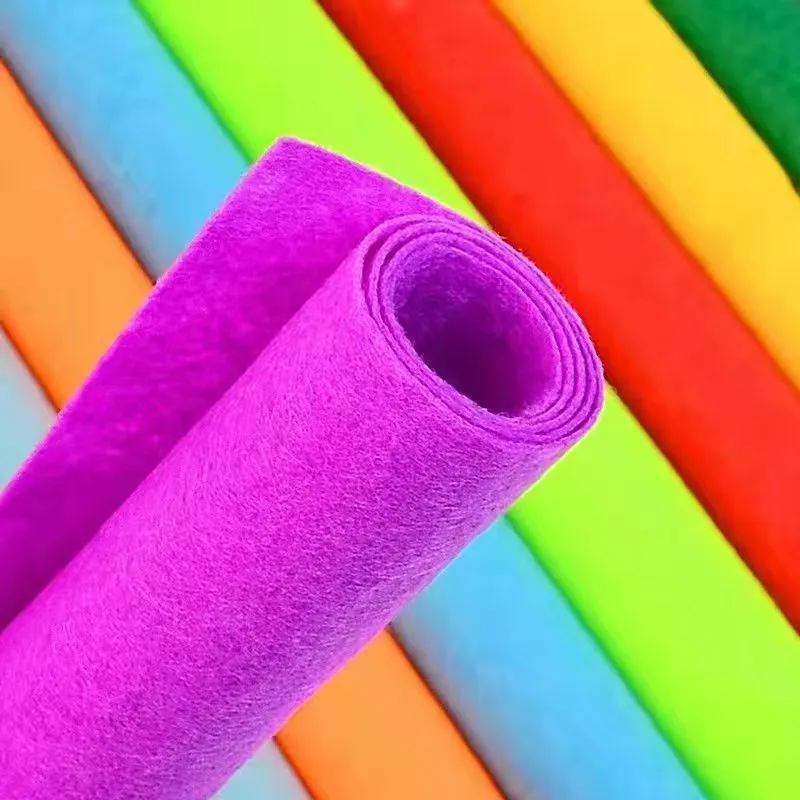felt
The Multifaceted World of Felt
Felt, often overlooked in the realm of textiles, is a fascinating material with a rich history and versatile applications. Its unique characteristics and tactile qualities make it a favorite among artisans, designers, and crafters. Unlike woven fabrics, felt is made by matting, condensing, and pressing fibers together. This process can involve natural fibers such as wool, or synthetic materials, resulting in a dense, durable product that boasts a myriad of uses.
The origins of felt date back thousands of years, with historical records suggesting that it was first crafted by nomadic peoples who utilized the wool from their sheep. They created felted items for warmth and comfort, recognizing the natural insulating properties of the material. This ancient crafting technique has been passed down through generations and has evolved into a contemporary medium for creative expression.
One of the most appealing aspects of felt is its tactile nature. When you run your fingers over a piece of felt, you can feel its soft, plush surface. This quality makes it an ideal choice for a variety of applications, from fashion accessories to home decor. In the realm of fashion, felt is often used to create hats, bags, and shoes. Designers appreciate its ability to hold shape while offering comfort and warmth. The use of felt in fashion has seen a resurgence in recent years, as more people gravitate towards handmade and unique items that tell a story.
Felt is also widely used in the crafting community. Its ease of manipulation makes it accessible to both novice and experienced crafters. You can cut, sew, and glue felt without fraying edges, allowing for clean lines and intricate designs. From children’s craft projects to elaborate home decor pieces, the possibilities are endless. Many crafters enjoy creating whimsical toys, felted animals, and decorative wall hangings that add a personal touch to their spaces.
felt

Moreover, felt has found its place in educational settings, particularly in early childhood education. Teachers utilize felt boards for storytelling and interactive learning. Children can engage with colorful felt shapes, allowing them to explore their creativity while developing fine motor skills. This tactile method of learning captivates young minds, making it a valuable tool for educators.
In addition to its practical uses, felt is also recognized for its eco-friendly qualities. When made from natural fibers, such as wool, felt is biodegradable and sustainable. With increasing awareness around environmental issues, many artisans are choosing to work with eco-conscious materials. The ability to create beautiful, functional items from natural resources aligns with the values of sustainability, making felt a preferred choice for many.
Furthermore, the revival of traditional craft practices has led to a renewed interest in felt-making techniques. Workshops and online tutorials are flourishing, empowering individuals to explore this ancient art form. People are experimenting with dyeing and layering felt, creating intricate patterns and textures that bring a contemporary twist to this timeless material.
In conclusion, felt is much more than a simple textile; it is a versatile and expressive medium that has stood the test of time. Its rich history, tactile appeal, and sustainable qualities make it a beloved choice for designers and crafters alike. Whether used in fashion, home decor, or educational settings, felt continues to inspire creativity and connection. As we move forward, the art of felt-making is likely to thrive, inviting new generations to explore its endless possibilities and celebrate its enduring charm.
-
What Makes Felt a Great Choice?NewsNov.19,2024
-
Total Mixed Ration (TMR) Feed for CattleNewsNov.19,2024
-
The Ultimate Guide for Felt Polishing WheelsNewsNov.19,2024
-
Industrial Felt for Various ApplicationsNewsNov.19,2024
-
Felt Makeup Bags and Inserts BagsNewsNov.19,2024
-
Choosing the Right Hotel TowelsNewsNov.19,2024
-
Your Go-To Guide For Affordable Wholesale Wool FeltsNewsOct.31,2024







